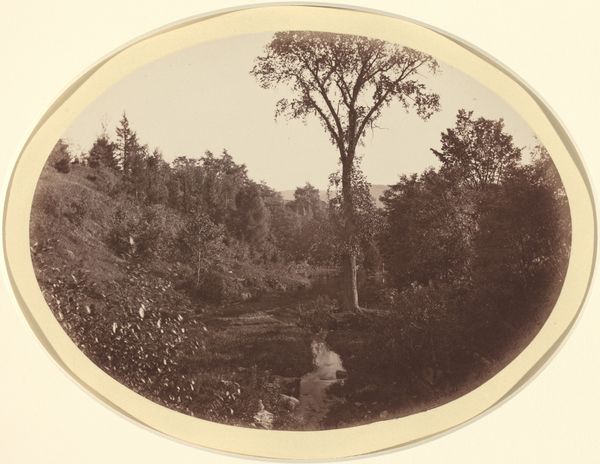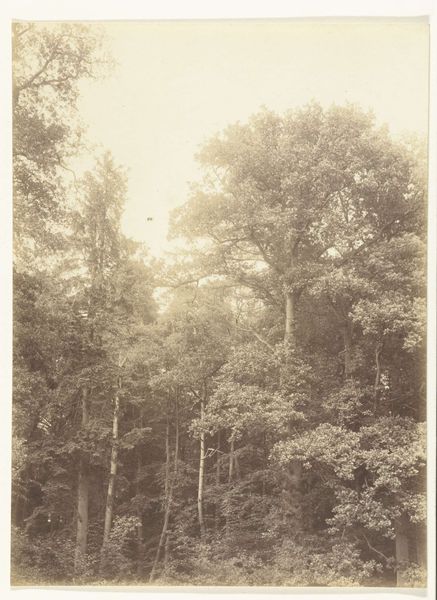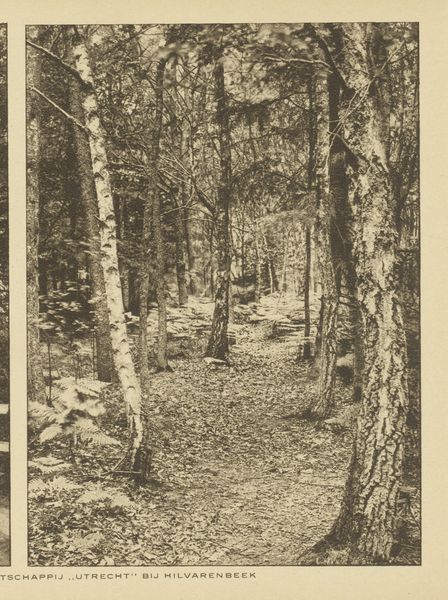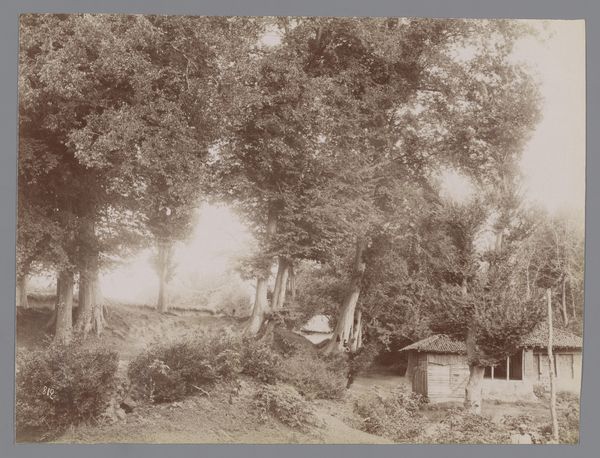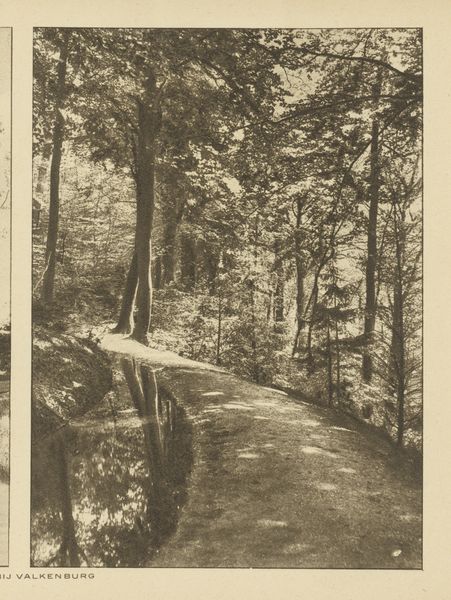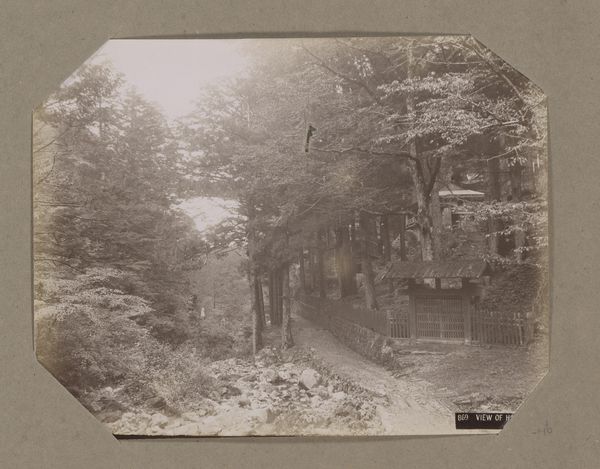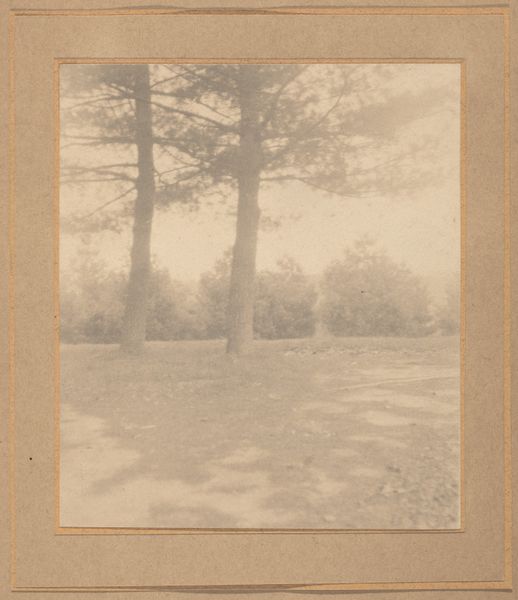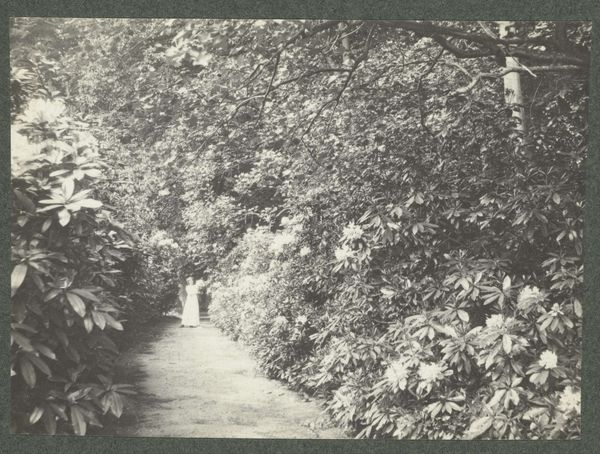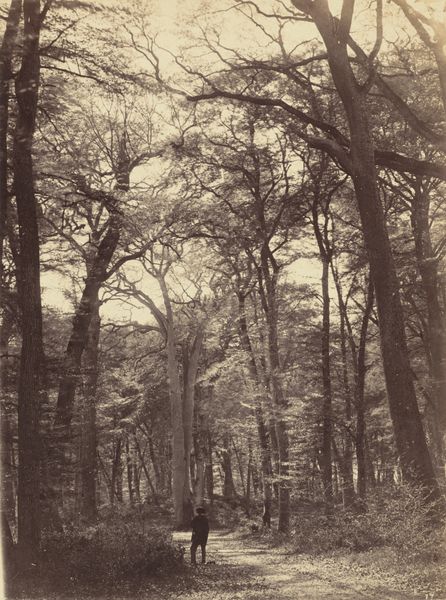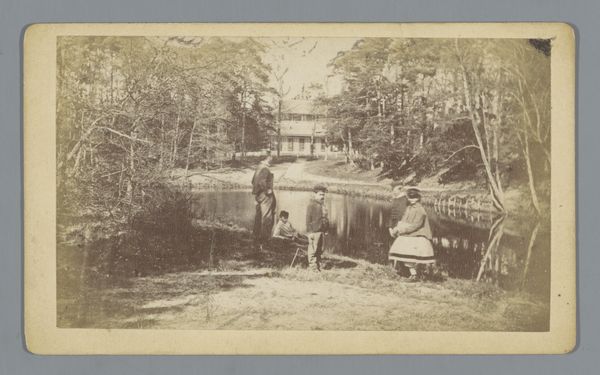
photography, gelatin-silver-print
#
pictorialism
#
landscape
#
photography
#
forest
#
gelatin-silver-print
#
natural palette
#
naturalism
Dimensions: height 108 mm, width 166 mm
Copyright: Rijks Museum: Open Domain
Editor: This photograph, “Gezicht op het Ter Kamerenbos te Brussel,” a gelatin-silver print taken sometime between 1860 and 1900, presents a very structured, almost geometric view of nature. What can you tell me about how the formal elements work in this piece? Curator: Indeed. Consider first the stark contrast between the densely packed trees and the subtle break introduced by the bridge. The linear quality of the bridge cuts through the organic forms, providing a focal point and inviting the eye deeper into the composition. Notice the way the light filters through the canopy; how does it affect the textures and overall structure of the image? Editor: I see how the bridge creates a sense of depth and offers a pathway, not just visually but conceptually. The textures created by the light also contribute to a rich tonal range, but why render a landscape like this? Curator: Ask yourself, what are the fundamental aspects of landscape? Here, we see emphasis on depth, light, and form, arranged with meticulous attention. This is not merely a depiction of nature, but an exploration of photographic form. The balance of light and shadow, the arrangement of forms, serves primarily aesthetic purposes. Editor: So, you’re saying the aesthetic and the technique are more important than the subject itself? Curator: Precisely. It is the formal arrangement, the calculated use of light and shadow, that elevates this image beyond a mere record of place. We're witnessing an articulation of pictorial space achieved through a sophisticated manipulation of photographic elements. Editor: I see it now, it's a forest but organized, framed and reduced into shapes. I focused so much on *what* it was that I ignored the composition itself! Curator: Often, a deep dive into form allows us to better appreciate not only individual pieces but broader trends in art history as well. It allows for a rigorous assessment of value independent of cultural or historical narratives.
Comments
No comments
Be the first to comment and join the conversation on the ultimate creative platform.
